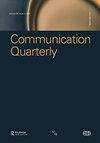Judicious invention: flexible application of judicial doctrine in the Roberts Court’s voting rights jurisprudence
IF 1
Q2 COMMUNICATION
引用次数: 0
Abstract
ABSTRACT The Roberts Court has issued several important voting rights decisions in the past decade that have enabled voting restrictions at the state and local level. This essay examines two of them, Shelby County v. Holder (2013) and Husted v. A. Philip Randolph Institute (2018). By juxtaposing the reasoning patterns of the majority opinions in Shelby County and Husted, I explore how the majorities in both cases utilized the flexibility of judicial doctrines as sites of invention. Chief Justice Roberts’ opinion in Shelby County combined arguments from circumstance with appeals to stare decisis, whereas Justice Alito’s opinion in Husted relied on a textualist argument. Comparing these approaches illustrates how jurists can flexibly apply judicial philosophies as inventional tools to achieve a desired result in high profile cases. This essay reveals how an understanding of the Supreme Court’s argument invention practices can complement attitudinal and strategic theories of judicial decision-making.司法发明:罗伯茨法院投票权判例中司法原则的灵活应用
摘要在过去的十年里,罗伯茨法院发布了几项重要的投票权裁决,在州和地方层面实施了投票限制。本文考察了其中两起案件,Shelby County v.Holder(2013)和Husted v.A.Philip Randolph Institute(2018)。通过并置Shelby County和Husted的多数意见的推理模式,我探讨了在这两个案件中,多数意见如何利用司法学说的灵活性作为发明的场所。首席大法官罗伯茨在谢尔比县的意见结合了来自环境的论点和对凝视判决的上诉,而大法官阿利托在Husted的意见则依赖于文本主义的论点。比较这些方法说明了法学家如何灵活地将司法哲学作为发明工具,在引人注目的案件中达到预期的结果。本文揭示了对最高法院论点发明实践的理解如何补充司法决策的态度和战略理论。
本文章由计算机程序翻译,如有差异,请以英文原文为准。
求助全文
约1分钟内获得全文
求助全文

 求助内容:
求助内容: 应助结果提醒方式:
应助结果提醒方式:


